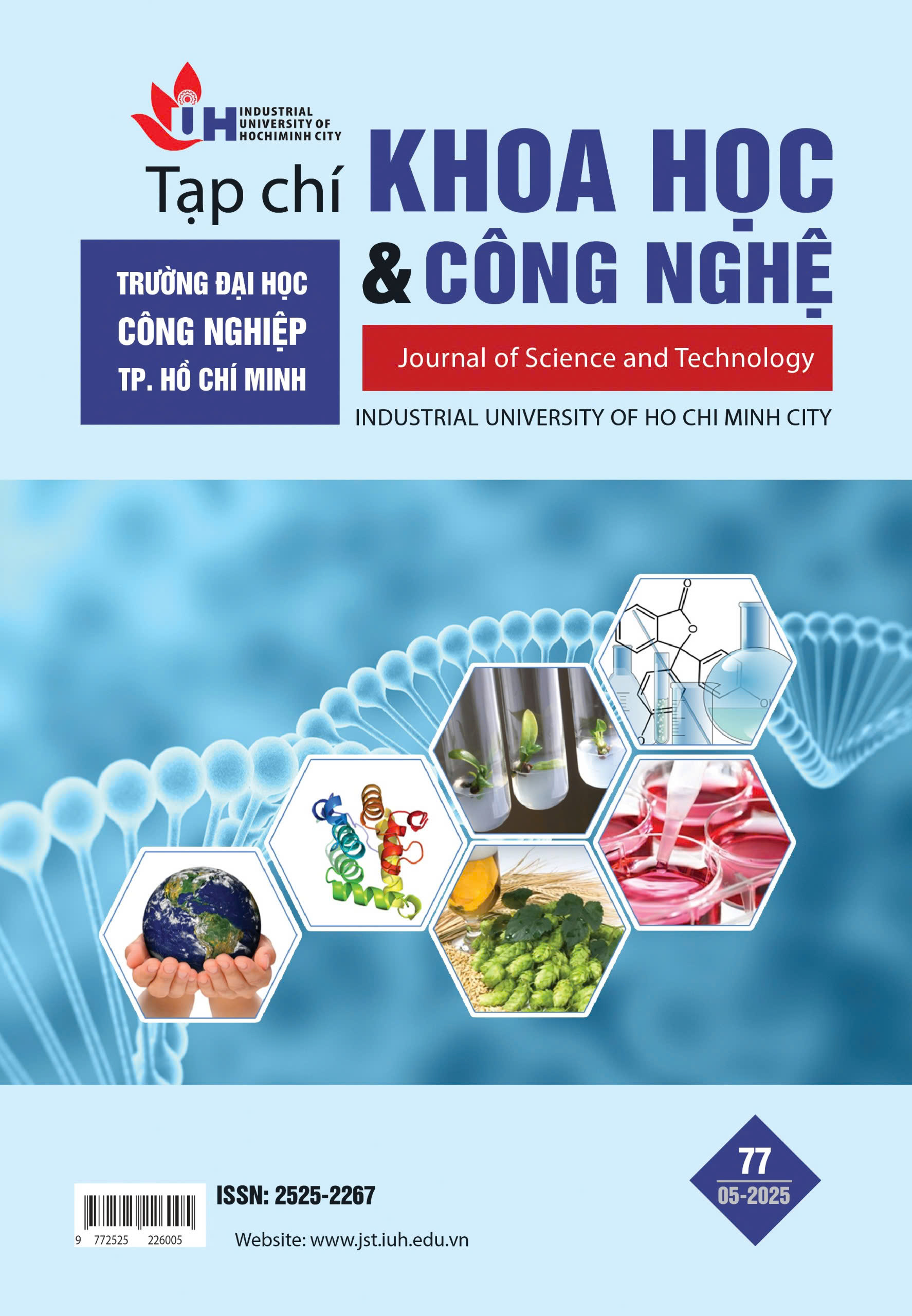INACTIVATION OF GREEN TEA POLYPHENOL OXIDASE BY MICROWAVE
Main Article Content
Abstract
Polyphenol oxidases are a group of oxidative enzymes that catalyzes phenolic compounds. For high-quality green tea production, complete inactivation of these enzymes during the killing stage is essential. This research aims to improve the efficiency of polyphenol oxidase inactivation using microwave technology. The study evaluates the effectiveness of polyphenol oxidase inactivation using eight different techniques: blanching, steaming, pan-firing, microwaving, blanching with microwaving, steaming with microwaving, microwaving with steaming, and microwaving with blanching, applied to various components of raw materials, including buds, leaves, stems, and tea buds. The results showed that, for tea leaves, all enzyme inactivation methods have similar efficiency, with enzyme inactivation efficiency over 72.42%. For other components, such as buds, stems, and tea buds, the microwave-assisted methods provide better enzyme inactivation efficiency than traditional techniques like blanching, steaming, and pan-firing. Among these, the steaming combined with microwaving method was the most effective, reaching an inactivation efficiency of 70.7%. Additionally, when using microwave power at 600 W for 3 minutes, enzyme inactivation efficiency increases to 78.8%. This research outcome can be applied to real-world production, especially as industrial microwaves are now widely used

